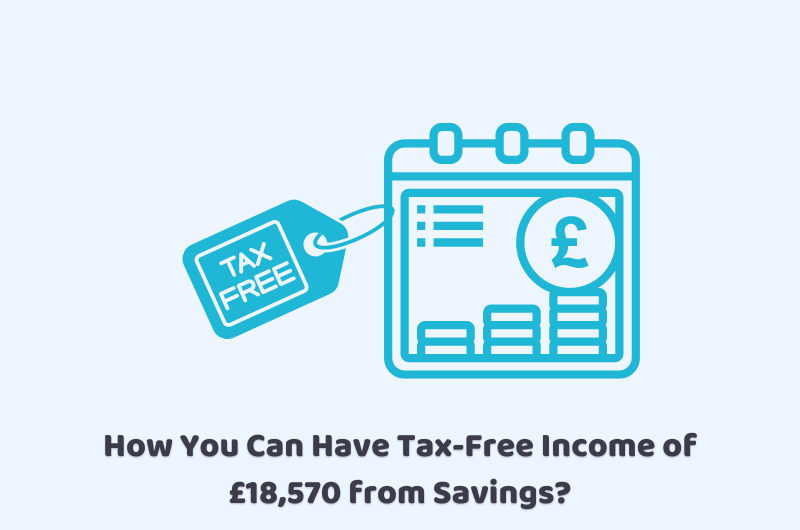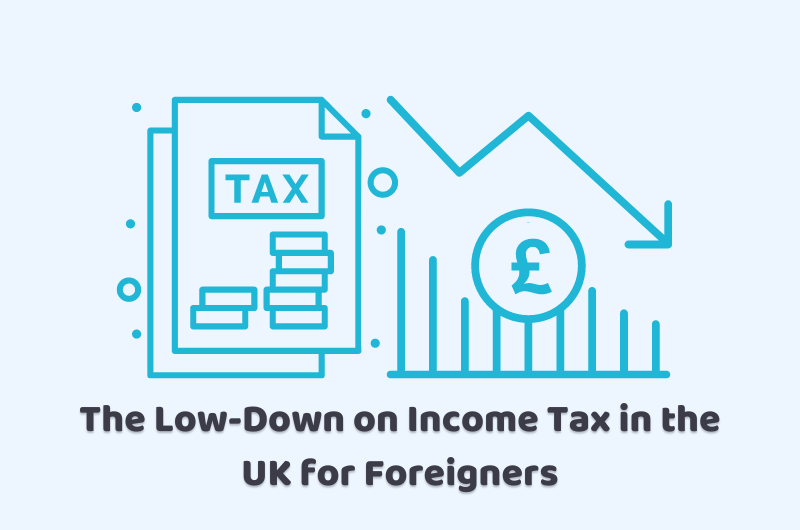
14/10/2022Personal Tax , tax , Tax Saving Tips , Taxation
How much income is tax-free if you are saving from your income and earning interest on it? Many people in the UK put some savings aside and earn an interest rate on them. However, they have no idea about the tax-free income from savings they can have.
Interest in savings is a good source of earning additional income in the UK where the cost of living is increasing every day. However, this income is also not tax-free. You have to pay tax on this income too. Just like income, there’s an income allowance, you can have multiple allowances on your savings as well.
If you’re also one of those people who have no idea about allowances and tax-free savings incomes, then we have got you covered. In this blog, we will walk you through different types of tax-free allowances and how you can get the maximum tax-free income from your savings. So, let’s start!
Do you need help in sorting out your tax problems if you are self-employed or working with an organisation? Let’s get instant help from the qualified financial experts at CruseBurke.
Tax on Interest Income
Many people in the UK keep their savings either in cash Individual Savings Accounts (ISAs) or in bank accounts. For this, they earn a certain percentage of interest rate on these savings. HMRC offers tax-free allowances to these people who save.
Cash Individual Saving Accounts (ISAs) are free from taxes and anyone can have these savings accounts without paying any tax on them. However, other savings are eligible for taxes in the UK after certain allowances.
These allowances are as follows:
- Personal Allowance
- Starting Rate of Saving Allowance
- Personal Savings Allowance
Personal Allowance (PA)
HMRC covers all the income received from all sources of income. If you have multiple sources of income, including interest income, you will get a personal allowance after calculating the total income from all these sources.
You cannot get a separate personal allowance for each source of income. In other words, you will get only one personal allowance on the total income you received in a tax year. You will get a personal allowance of £12,570 after the calculation of the total income. The rest of the income will be taxed according to the tax bracket in which your income falls.
Starting Rate For Savings (SRS)
Starting rate for savings is zero percent for the people earning a low level of income. On the other hand, the starting rate for savings is tax-free up to £5,000. It is calculated after the calculation of the personal allowance.
For example, if your income is £16,500 and you get a personal allowance of £12,570. The remaining income will be:
£16,500 – £12,570 = £3,930
Now, you can calculate the starting rate of savings that is tax free as follows:
£5,000 – £3,930 = £1,070
It means you can have £1,070 from the interest income as tax-free. For example, if you are earning £50 as interest on your savings, it is tax-free as it is within the limit of starting rate of savings that is now £1,070.
Personal Savings Allowance (PSA)
Personal savings allowance is another tax-free allowance on the income earned from the interest on savings. Personal saving allowance is fixed for different tax bands. For example,
- Personal Savings Allowance for Basic Rate Tax Payers is £1,000
- Personal Savings Allowance for Higher Rate Tax Payers is £500
- Personal Savings Allowance for Additional Rate Tax Payers is £0
In other words, if you are earning more than £12,571 and less than £50,000, you are paying 20% income tax on your income. However, you can get a Personal saving allowance of £1,000 on your interest income.
On the other hand, you can get £500 Personal Savings Allowance, if you are a higher rate taxpayer. Unfortunately, you cannot get any PSA on your savings if you are a higher rate taxpayer in the UK.
How Much Income is Tax-Free on Savings?
If we calculate all of the above allowances for a basic-rate taxpayer, you will get a total tax-free income of £18, 570. For example:
Tax-Free Income = Personal Allowance + Starting Rate For Savings + Personal Savings Allowance
Tax Free Income = £12,570 + £5,000 + £1,000
= £18,570
The Bottom Line
Finally, we can say that you can earn more tax-free income if you earn interest on your savings. However, you have to pay no tax if you have saved your income as cash ISAs in the UK. Otherwise, you will get a personal income allowance, starting rate of savings and personal savings allowance.
For this, you need to work out your total income and calculate the tax-free savings income. You need to keep all records of all your sources of income and tax receipts to claim tax-free income from the HMRC.
Experienced and certified tax advisors at CruseBurke are the experts in UK tax laws and able to deliver the best tax solutions to you. Feel free to contact us now!
Disclaimer: All the information provided in this article on How Much Income is Tax Free, including all the texts and graphics, is general in nature. It does not intend to disregard any of the professional advice.



